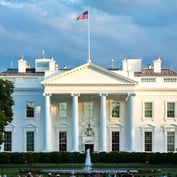What You Need to Know
- Rates are... what they are.
- The author acknowledges that diversification works for stocks.
- The author thinks there's a need for a more active approach for a client's fixed income assets.
It’s a relatively new thing in America that a large contingent of people publicly distrust those who create wealth. Yet, what started with Occupy Wall Street has culminated in a pitched battle where Wall Street, represented by hedge funds shorting GameStop, was roundly defeated by Main Street, represented by day traders taking the long position. These two watershed moments illustrate everything that is wrong in the investment world today: that two groups sharing the same interest, namely increasing their wealth, are doing battle with each other.
In an ideal world, Wall Street should win when the everyday investor wins. But too frequently, the everyday investor is a pawn in a much bigger game that only kingpins get to win. Therein lies the source of growing resentment, a belief that when Wall Street wins, Main Street loses. The little guy — often the middle-class worker — gets shorted. So, it’s unsurprising that regular people have lost their faith in the American wealth creation machine.
Where Are We?
For those who do participate in the market, the old idea of “slow and steady wins the race” has clearly flown out the window. Instead, in the age of the internet and especially social media, investors have been conditioned to expect unicorns — those magicked-up, largely tech-based companies that turn into billion-dollar babies overnight. Or, as in the case of GameStop, the sense that we can create them. This is largely where the stock market has resided in the public imagination: possibly a bit less risky than betting on horses, but the stakes are much higher.
How are workers supposed to plan — or save — for retirement, with that slow and steady maxim being ripped out from under their retirement funds, too? Only 55% of Americans own stock, and of those, 52% are in retirement funds; just 14% are individual stockholders. This also speaks to the growing distrust in the system, especially when contrasted with historical figures. In 2002, 67% of Americans owned stocks; already by 2007 this had dropped to 65%; then the 2008 crash brought savers, especially those near retirement, to their knees.
That middle class — with lifetime jobs, reliable pensions, and happy retirements — has been gutted. Now they’re on a downhill path, completely out of faith and quickly running out of options.
Of course, there are options to transfer risk, such as insurance. Vehicles like annuities likely have an appropriate time and place for inclusion in certain client portfolios. Clients typically count on a trusted advisor to choose which solutions in their toolbox are appropriate based on the client’s customized needs. In today’s zero interest rate environment, where traditional fixed income funds are struggling to keep up with real inflation and income needs, advisors are increasingly looking at insured solutions like fixed indexed annuities as a fixed income alternative.
However, there are drawbacks to transfer of risk arrangements. One potential drawback that’s consistent across insured alternatives to pure market solutions is that they are not daily liquid.
Here I want to make the case that fixed income investments may once again merit attention as a way to rebuild the American dreams.
How Did We Get Here?
Rate policy has caused all investors, especially conservative ones, to consider riskier assets in a search for high returns. In practice, money managers and investors have largely deleted the 30/70 stock-to-bond portfolio in favor of the 50/50 or 60/40 portfolio acting as the “New Conservative” approach. Our belief in the markets long-term has pushed us to solve for longevity risk in lieu of sequence-of-return risk. Look no further than the most utilized target date funds in American’s 401(k)’s to see that those that are near-dated (2020, 2025) are mostly 50/50 or 60/40 stock-to-bond portfolios. And what they make up in bonds often comprises holdings that are subject to fixed income risks, which we will address shortly.
In the absence of a better tool to address today’s and tomorrow’s markets, who can blame these managers for this drift toward risk? Given the choice between a mix of stocks and bonds only, those allocations seem prudent. But remember, we’re dealing with regular people and their hard-earned money. To accept risk is to accept volatility — and volatility challenges the emotions of even the most sophisticated investors.
To illustrate, let’s take what happened in March with the onset of COVID-19. We witnessed one of the sharpest declines the market has seen recently, with the S&P going down 33% in one week. Now that things appear to be getting better in the market, we can talk about it with apparent confidence, but if you take yourself back to that time, the world looked bleak.
Even investors who thought they were being conservative by holding to the classically designed model of a 60-40 stock-to-bond portfolio didn’t necessarily respond well to a medium degree of risk; their accounts took a sharp downturn.
And while there were many predictions about what might happen to the market after the COVID crisis — a W-shaped recovery curve, a banana-shaped curve, does it happen in 6 months or years? All over the board — it ended up being a V-shaped, short-term recovery, with new highs. And that outcome naturally played into American investors’ recency bias, which goes something like: ‘We don’t have to worry about things like the COVID downturn anymore, because look how the market came back.’ However, that’s not what the average American saver, especially one nearing retirement, was thinking last March.
Where are We Going?
Common wisdom among financial managers is that the market rewards people who stay in — but with the volatility and, let’s be honest, crashes we’ve experienced in 2008 and again at the beginning of the coronavirus pandemic, it may be time for a rewiring of our expectations. The persistent low interest rate environment has made traditional saving a no-win proposition, factoring in inflation and changing needs over a lifetime.
In the 1950s, when efficient frontiers were conceived, a high-yield savings account yielded on the order of 5% to 10%; this type of investment made sense over the long term. Over the last 30 years, aggregate bonds performed relatively well. However, post 2008, interest rates declined sharply due to quantitative easing measures. As rates declined, bond investors enjoyed a general price appreciation, potentially not fully understanding the inverse relationship between fixed income yield and price.









 March 22, 2021 at 12:41 PM
March 22, 2021 at 12:41 PM












